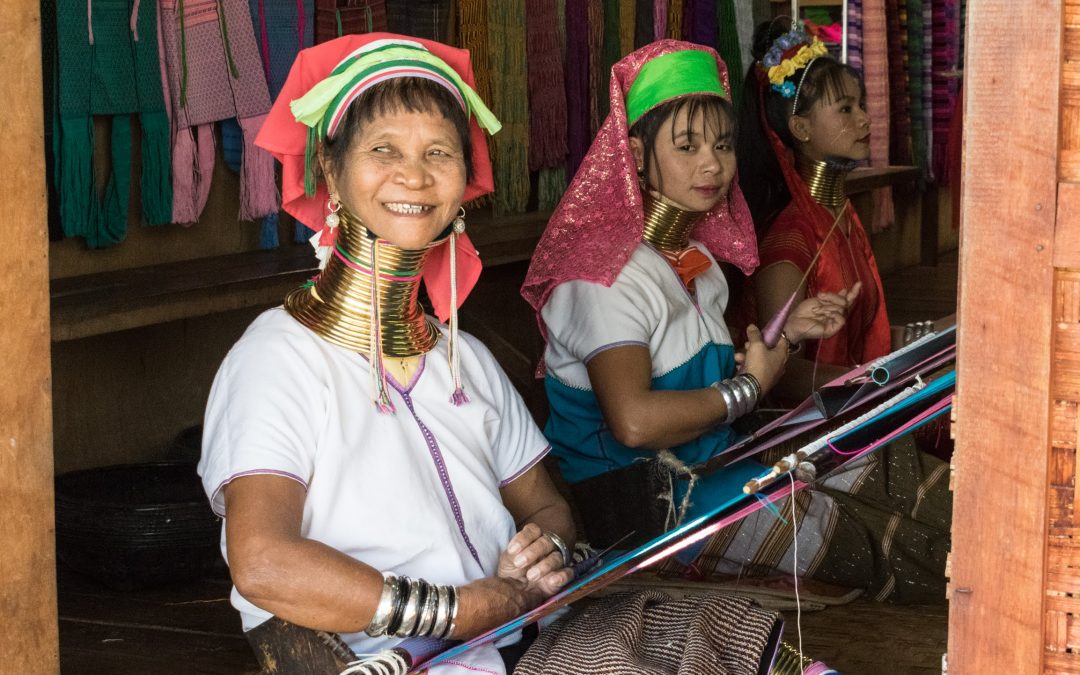A Thousand Years in 10 Days
We have never witnessed poverty like we’re seeing across Myanmar. Ladies washing the family clothes and themselves whilst fully dressed in the river, cooking dinner over an open fire and relying on those huge bundles of clothes that arrive from the western charities to wear with their colourful logyi. Of course there is also no formal healthcare, basic infrastructure like roads, electricity and clean water are often not present and low-powered Chinese motorbikes are everywhere. There are few travel opportunities although two of our guides have visited Thailand and China, overland. But there are no beggars, everyone seems happy and content and the monastery plays a key social role when tragedy strikes. Donors are asked to help pay for necessary operations, the monastery provides accommodation in case such things as a house fire occurs and, like the local market, it seems to be the centre of village life. No-one has much of anything. It was lovely to watch a group of boys playing with small, hand-made tops, expertly throwing and whipping them. On the other hand most adults seem to carry a cheap Chinese smartphone, presumably because they, like most people on the planet now, find them indispensable tools. Everyone is smiling, welcoming and happy which I find very humbling.
One of the most fascinating places to see a unique way of everyday Burmese life was at Inle Lake. Living in a bamboo house built on stilts on a lake surely makes poverty-level living even more difficult and we asked our Inle local guide, Noo Noo, why these people chose to live here rather than live on its shores. She told us that in days gone by it was too dangerous to live on the shores because of wild boar, elephant and tiger attacks, and this is what originally drove people to build their houses on the lake. Fair enough!
Each of the numerous villages on the lake specialises in a different trade. One village for weaving, another silversmithing, teak furniture, etc. all beautifully made, often with great craftsmanship. Hours spent making an item that will be sold for a few dollars and with recipient having little understanding of the work and effort making it entailed. I bought a little fabric at several of the weavers we visited, partly to support them but also because they are beautiful and I will be transported back to Inle whenever I wear or look at it.
One of the places Noo Noo took us to visit was a house of the so-called ‘long neck women’, the Padaung tribe. Noo Noo was a bit sniffy about them as she explained the women originally wore the gold and brass neck coils because a long neck was considered beautiful but nowadays they do it to make money from the tourists. To be honest we both found this visit disturbing, like visiting a zoo, especially when we learned how heavy the brass coils are and that its weight compresses the girls’ collar bones and ribcage. Some women also wear heavy coils around their knees which force them to walk with a waddle. Sadly, these days there is an element of commerce to it as the long neck ladies can earn a great deal as tourist attractions and so potential husbands with $ signs in their eyes find them even more ‘beautiful’!
The school on Inle has a very unique way of encouraging attendance. It is one of the only places on the lake where land has been reclaimed and it’s used as a playground. This one was full of boys and girls playing football together. Two young boys were also expertly flying paper kites over their school playground as we motored past in our long tailed boat.
We’ve visited several schools on our tour so far, one a monastery school with an orphanage, which was particularly moving. We took lots of books and pens with us but I thought that, whilst this was a recommended, well-meaning gesture there is so much more the orphan children really need. The headmaster/head monk told me that the children have everything, a place to sleep, food and schooling but I couldn’t help thinking again there is so much more they need than just these basic things.
Buddhism plays a huge part in these people’s lives. Every family is expected to send their children to become a novice monk or nun at some point. It can be for just a week or two or for their whole lives but when they reach the age of 20 they must decide themselves. We were told many times that Buddhism isn’t a religion but a way of life and from what we have witnessed it is a very caring and gentle society, or way of life, that is both humbling and thought-provoking.






